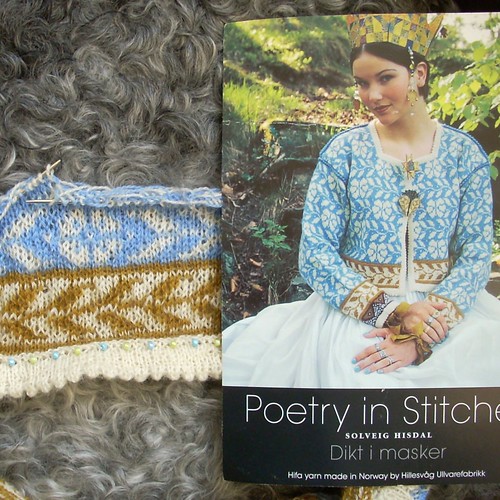Even though (useful expression!) I shouldn't (also good!) really (one more!) keep adding to my stash before I've knitted up more of it, I just couldn't resist some of the many gorgeous things I found at GarnGalleriet.
To be honest, I even told myself it was my duty to get knitting-related things for what I earned leading knitting workshops. And I bought the argument without making a fuss. Here's what I got:
 |
| A pattern book, 5 hanks of blue wool, 3 hanks of white cashmere, 5 hanks of green wool, a cardigan kit |
Solveig Hisdal's "Wedding cardigan" may be my top favourite design from her book Poetry in Stitches. I'm modifying the pattern in different ways, though, mainly to avoid long floats with both strands. Just one is ok, but two is too time-consuming to catch.
I recently found pretty Japanese pears on sale at Litet nystan and decided to use them in this project. Instead of the original's yellow pearls among the yellow leaves, I've added a row of green and blue pearls near the picot edge.
The yarn is thin, and the instructions in the kit tell you to use two strands. Instead, I'm using one strand and thinner needles (2 mm/US 0) - and more stitches. I did this to make the cardigan lighter and because I believe four strands in all might make it too warm to wear very often. And simply to see if it works!
PS I recently started and finished a vest with some yarn bought a few years ago, which shows I am capable of using my stash - and which means it's ok to add to it whenever I like ;-)

























